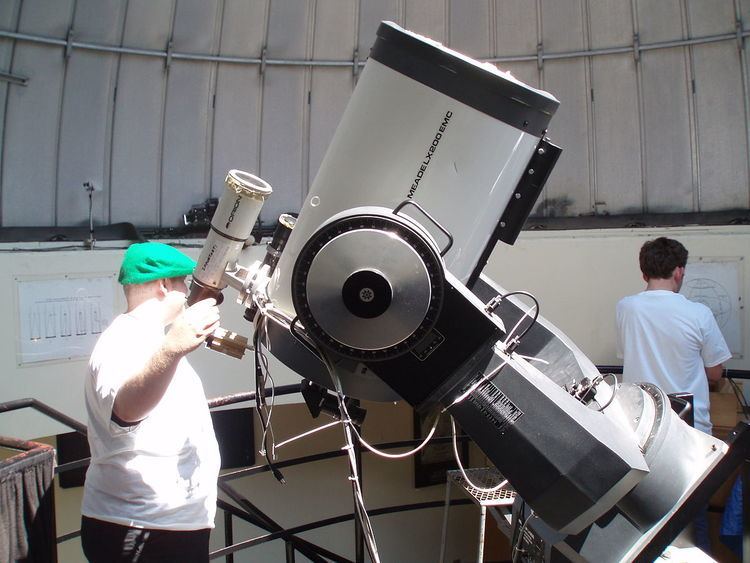Telescope style optical telescope | ||
 | ||
Website www.meade.com/products/telescopes/lx200.html | ||
The Meade LX200 is a family of commercial telescopes produced by Meade Instruments launched in 1992 with 8" (20.32 cm) and a 10" (25.4 cm) Schmidt–Cassegrain models on computerized altazimuth mounts. Two larger models, a 12" (30.48 cm) and a 16" (40.64 cm), quickly followed. It became the best-selling serious amateur telescope. The original version was later informally named the "classic" LX200 as newer upgraded versions replaced it. The first of these was the LX200GPS, which featured global positioning system electronics. A 360 mm (14 in) LX200GPS was later added to the line.
The advantage of the LX200 was price for its performance, which was accomplished by using electronics and software to equal the pointing performance of more expensive systems. Software and optical encoders corrected for errors, and the telescope also came with auto-guiding CCD and planetarium software.
A related series starting about 2008 was the even higher end RCX400 (later renamed LX400-ACF), with new optics and a motorized focus/collimation system, and with upgraded fork mount electronics. These were available in the same 8" (20.32 cm) to 16" (40.64) size range on the new fork mount, and the 16" (40.64 cm) optical tube assembly (OTA), along with a new 20" (50.8 cm) OTA, were available on a new German equatorial mount. These were all f/8 optical systems, costing up to $50,000 for the 20" on the German equatorial mount.
An f/10 version of the new optics later replaced the optics of the existing LX200GPS fork mount models, with the new product line now called the LX200R (later renamed LX200-ACF). The revised optics are called advanced coma free (ACF) after a lawsuit by Star Instruments and RC Optical Systems disallowed implying that they were based on Ritchey–Chrétien optics. http://www.narrowbandimaging.com/images/RC_vs_Meade.pdf
In September 2012, an amateur astronomer used an LX200GPS to record an impact on the planet Jupiter.
Installations
Selected observatories with LX200 telescopes.
